| Component | Description | Function | Example/Features |
|---|---|---|---|
| Touchscreen Display | User interface for patient interaction | Allows patients to enter data, select options, and navigate | High-definition, multi-touch, customizable UI |
| ID/Insurance Card Scanner | Device to scan patient IDs, insurance cards, or barcodes | Captures patient information for verification and record-keeping | Integrated with EMR, supports various card types |
| Payment Processing Module | Terminal for handling payments, including co-pays | Enables secure transactions using credit/debit cards or contactless payments | EMV, NFC, and chip reader support |
| Printer | Prints receipts, appointment slips, or other documentation | Provides patients with physical copies of receipts or instructions | Thermal printer, customizable print options |
| Signature Pad | Device for capturing patient signatures digitally | Used for signing consent forms or confirming information | High-resolution, pressure-sensitive pad |
| Camera | Captures patient photos for records or identification | Adds an extra layer of security and verification | High-resolution, adjustable angle |
| Speakers/Audio System | Provides audio feedback or instructions | Assists patients with auditory prompts or guidance | Built-in, adjustable volume, multi-language support |
| Barcode/QR Code Scanner | Scans barcodes or QR codes for quick information retrieval | Used for fast check-ins, accessing patient records, or verifying prescriptions | High-speed, accurate scanning capabilities |
| Keyboard (Virtual or Physical) | Input method for entering data if needed | Offers an alternative to touch input, useful for detailed information entry | On-screen or physical, ergonomic design |
| Privacy Screen | Shields the display from side views | Ensures patient data is only visible to the user | Anti-glare, side-angle protection |
Patient Registration: Streamlines the process of registering patients upon arrival, allowing them to quickly check in for appointments.
Updating Personal Information: Enables patients to update their contact details, medical history, and insurance information directly through the kiosk.
Payment Processing: Facilitates the collection of co-pays, outstanding balances, or other payments securely and efficiently.
Appointment Scheduling: Allows patients to view, confirm, or reschedule their appointments on-site without needing to interact with staff.
Form Completion: Provides a digital platform for patients to fill out consent forms, health questionnaires, or other necessary documentation.
Queue Management: Integrates with queue systems to provide patients with real-time updates on their wait times and appointment status.
Wayfinding and Information: Offers directions within the healthcare facility, along with educational materials or announcements relevant to the patient’s visit.
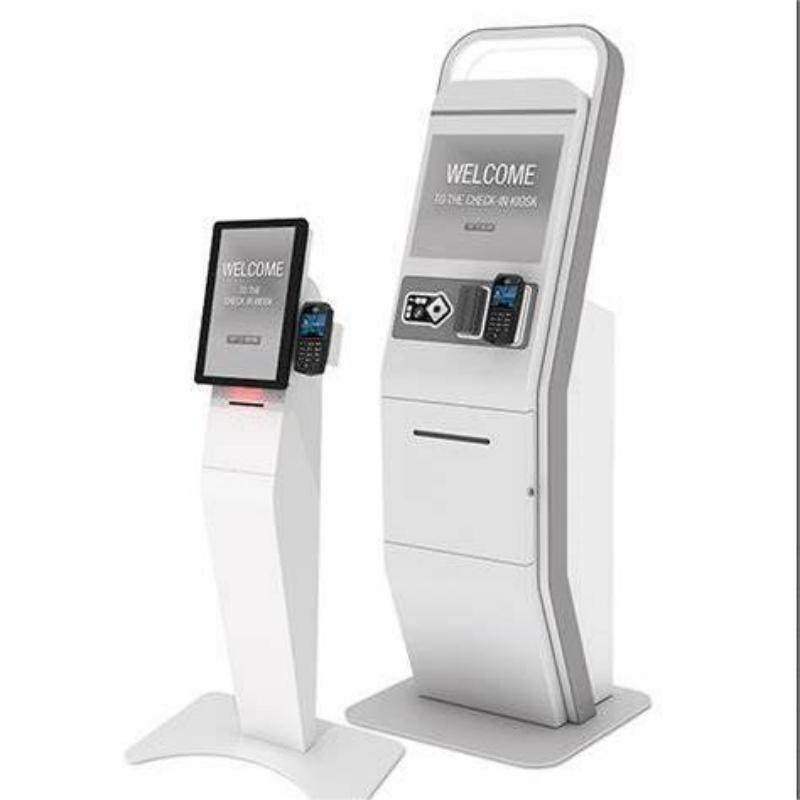
Reduced Wait Times: Speeds up the check-in process, allowing more patients to be processed in a shorter amount of time, leading to shorter wait times.
Enhanced Patient Experience: Provides a user-friendly, self-service option that empowers patients to manage their check-in process, leading to higher satisfaction.
Improved Data Accuracy: Minimizes human error by allowing patients to directly input their information, ensuring that records are up-to-date and accurate.
Increased Efficiency: Frees up administrative staff from routine tasks, allowing them to focus on more complex patient needs and improving overall clinic efficiency.
Secure Payment Processing: Offers a secure platform for patients to make payments, reducing the need for cash handling and improving financial transaction accuracy.
Seamless Integration: Integrates with existing electronic medical record (EMR) systems, ensuring that all patient data is instantly updated and accessible across the healthcare facility.
Cost Savings: Reduces the need for additional administrative staff and physical paperwork, leading to long-term cost savings for healthcare providers.

| Type | Sizes (inches) | Design | Price Range (USD) |
|---|---|---|---|
| Freestanding Kiosk | 22"-32" | Full-height, standalone unit | $3,000 - $7,000 |
| Wall-Mounted Kiosk | 17"-27" | Compact, mounted on walls for space-saving | $2,000 - $5,000 |
| Desktop Kiosk | 15"-22" | Small, placed on desks or counters | $1,500 - $3,500 |
| Tablet-Based Kiosk | 10"-13" | Portable, minimal footprint | $800 - $2,000 |
| Outdoor Kiosk | 32"-55" | Weatherproof, robust for outdoor use | $5,000 - $10,000+ |
| Custom-Built Kiosk | Varies according to specifications | Tailored design to meet specific needs | $4,000 - $12,000+ |
Screen Size and Resolution: Choose from a range of screen sizes and resolutions depending on the environment and patient interaction needs.
Branding: Custom logos, colors, and branding elements to align the kiosk with the healthcare facility's brand identity.
Software Integration: Integration with specific EMR systems, billing software, and other healthcare management systems.
Payment Options: Adding various payment modules such as credit card readers, NFC for contactless payments, and cash acceptors.
Peripheral Devices: Options to include additional peripherals like fingerprint scanners, thermal printers, and barcode/QR code scanners.
Accessibility Features: Adjustable height, voice guidance, and ADA-compliant designs to accommodate all patients, including those with disabilities.
Material and Finish: Choices of materials (metal, plastic, wood) and finishes (glossy, matte, etc.) to fit the facility's aesthetic and durability requirements.
Assess Needs and Workflow: Evaluate the specific needs of your facility, including patient volume, types of check-ins, and integration with existing systems.
Consider Location and Space: Choose the type of kiosk (freestanding, wall-mounted, desktop) based on the available space and where the kiosk will be most effective.
Evaluate Customization Requirements: Determine what customization options are essential for your facility, including branding, software integration, and accessibility features.
Budget Considerations: Compare prices and features across different models and suppliers to ensure the chosen kiosk offers the best value for your budget.
Check for Support and Maintenance: Ensure the supplier provides robust customer support and maintenance services to minimize downtime and ensure smooth operation.
Review Compliance Standards: Verify that the kiosk meets all relevant healthcare standards, including HIPAA compliance for patient data protection.
Read Reviews and Testimonials: Look for feedback from other healthcare providers who have purchased similar kiosks to ensure you’re making a well-informed decision.
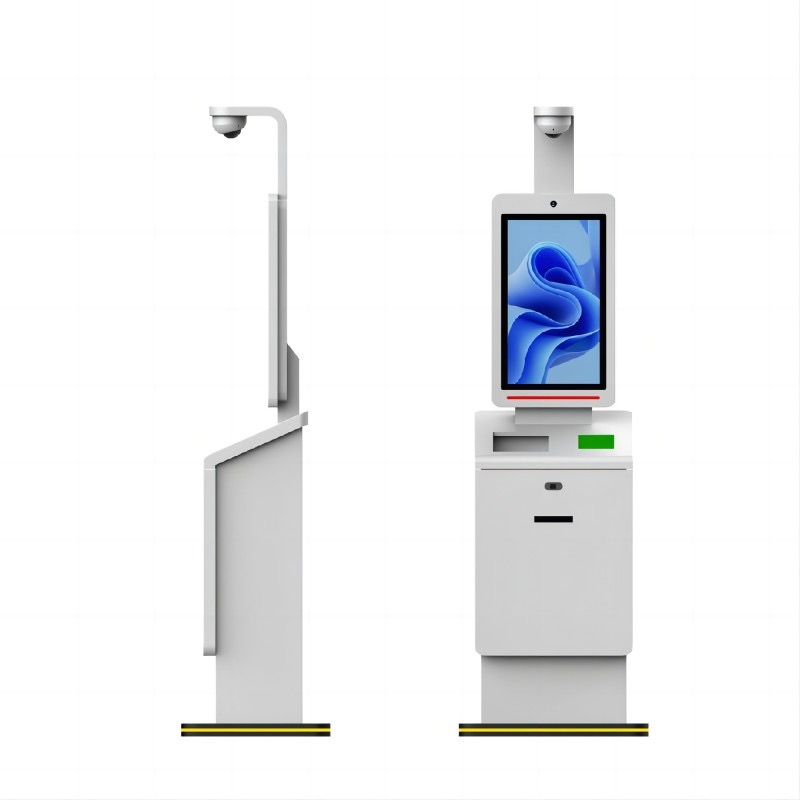
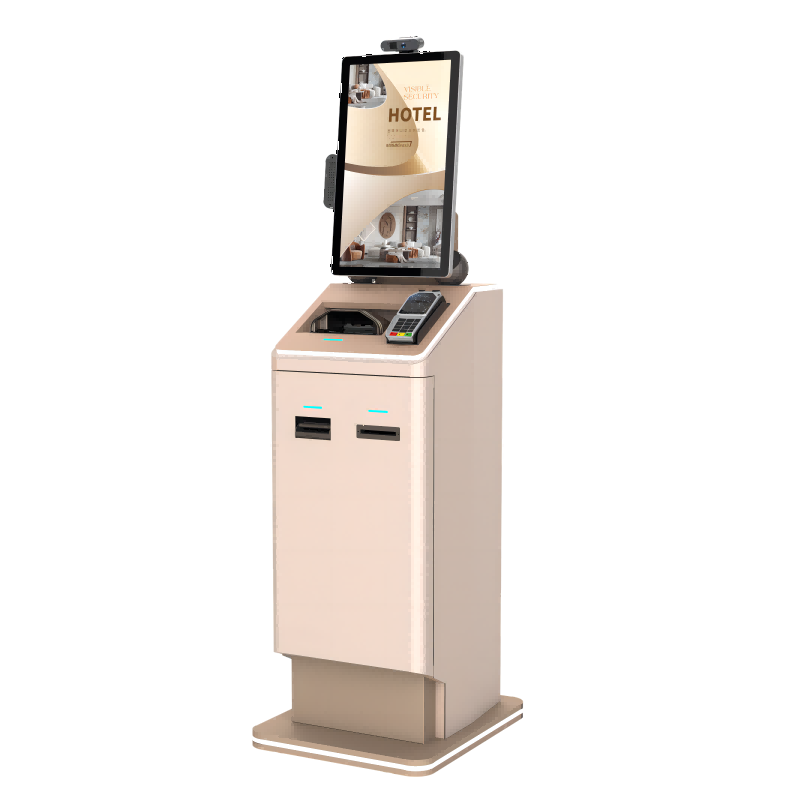
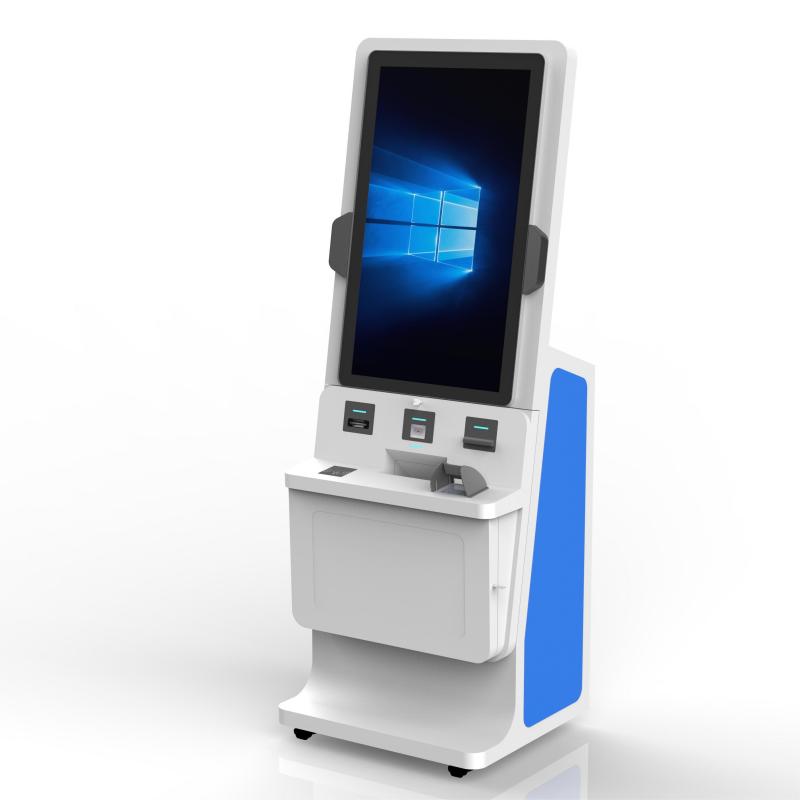
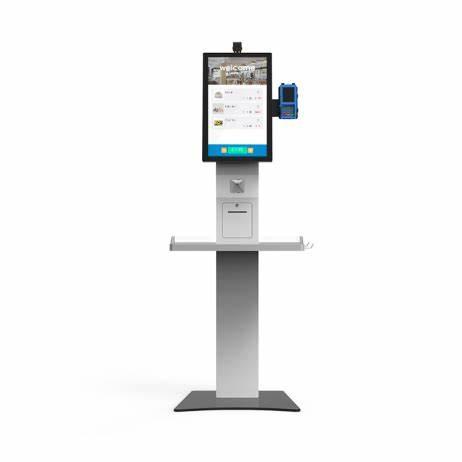
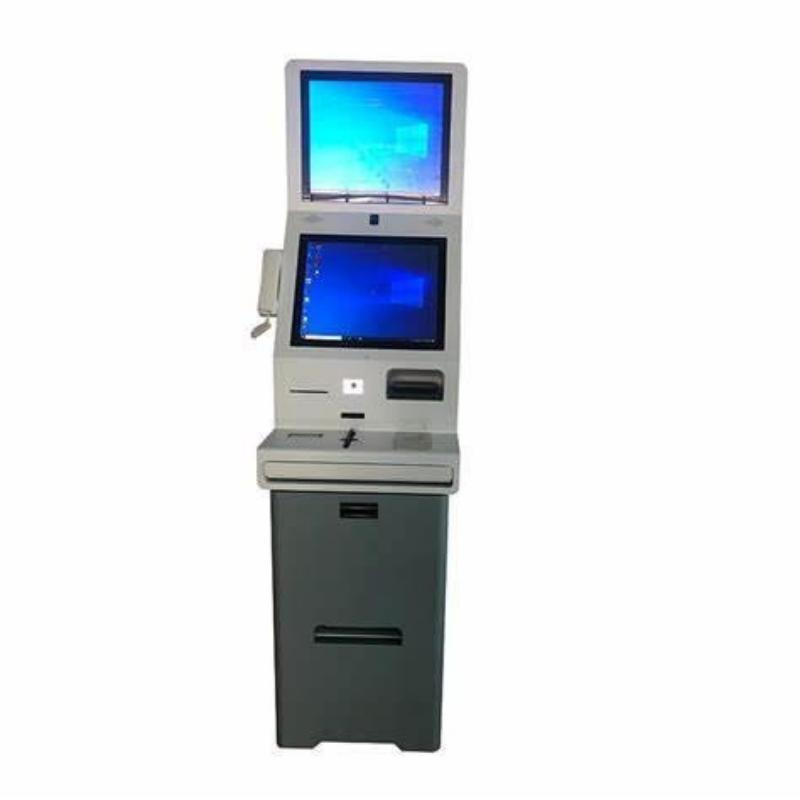

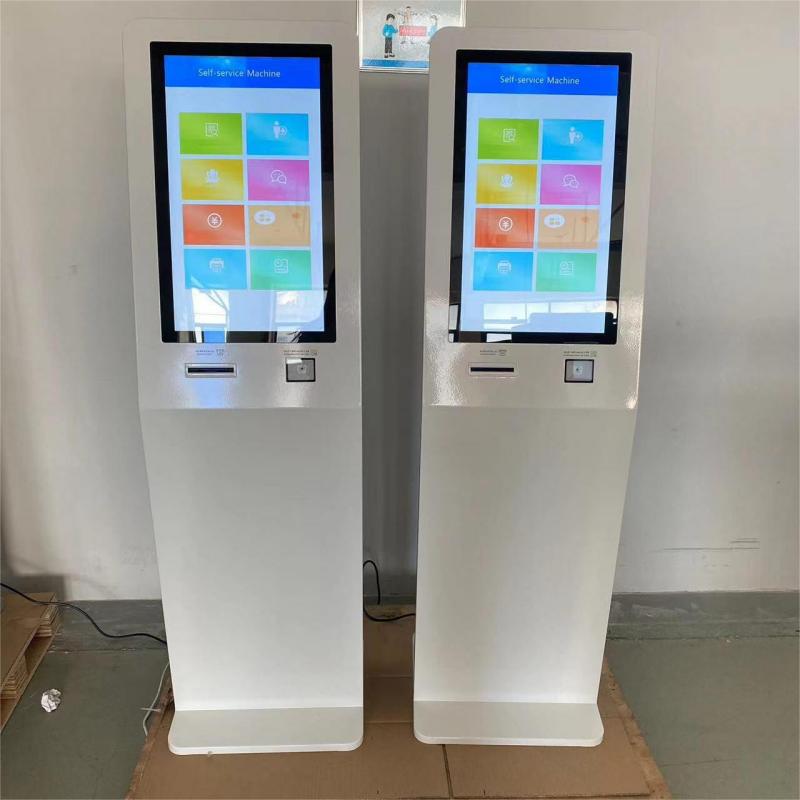
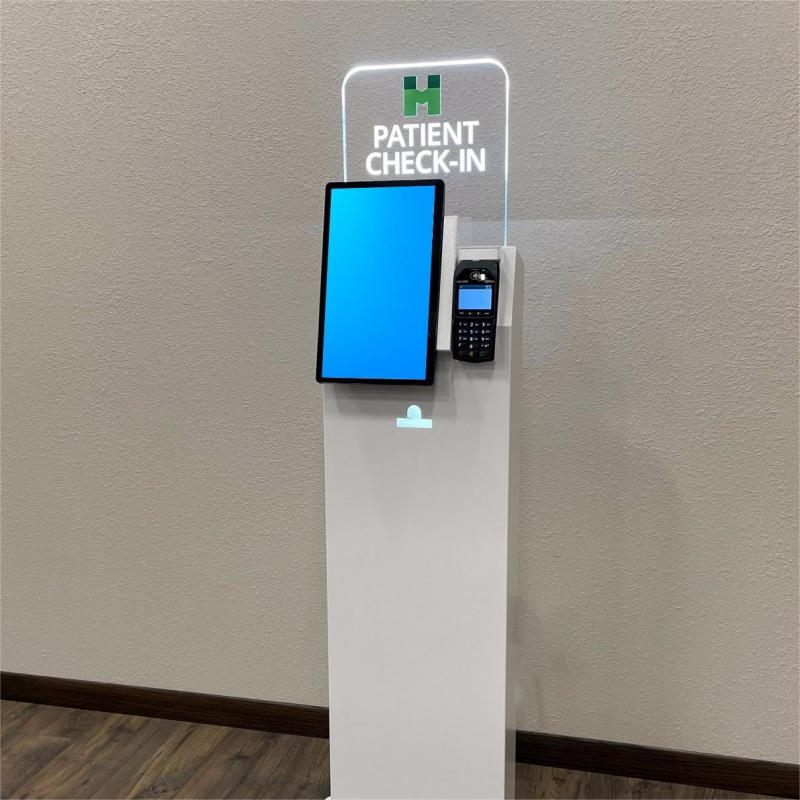
What did our happy clients say?
We are thrilled with our new medical check in kiosk! It’s streamlined our check-in process and improved patient satisfaction. A big thank you to the manufacturer for their excellent support and product quality!
The medical check in kiosk has exceeded our expectations! It’s user-friendly and integrates seamlessly with our systems. We appreciate the manufacturer’s outstanding service and highly recommend them.
Fantastic experience with our new medical check-in kiosk! The installation was smooth, and it’s made a huge difference in our clinic’s efficiency. Thanks to the manufacturer for their great work and support!
Our new medical check in kiosk is a hit with both staff and patients. The customization was perfect, and the quality is top-notch. We’re grateful to the manufacturer for their excellent product and service!